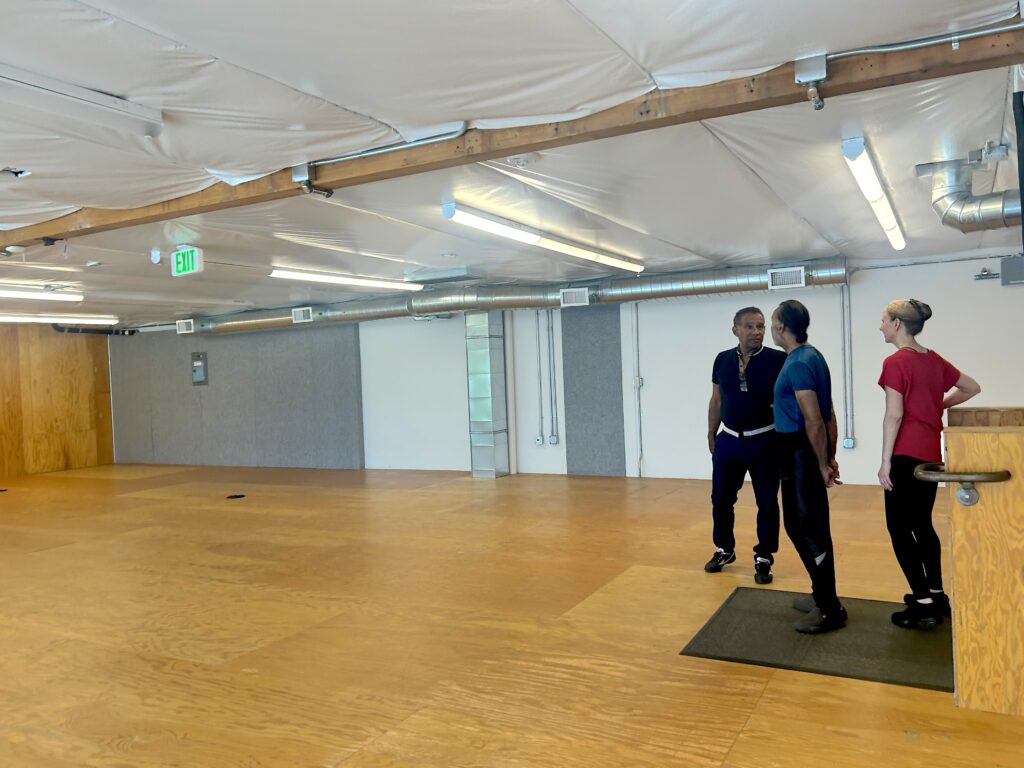By Jacqueline Carlisle, Senior Community Real Estate Consultant
As a Senior Community Real Estate Consultant at Community Vision, I have the privilege of working with organizations that approach their facilities as more than just physical spaces—they see them as strategic assets that advance their mission.
One client that exemplifies this approach is Western Ballet, located in Mountain View, CA. Founded in 1976, Western Ballet makes classical ballet performances and education accessible to the general public—including low-income families and underrepresented communities.
The nonprofit operates with a strong business model and a clear understanding of its financial position. What impressed me most was how they approached facility planning with discipline and intentionality, reflective of the art form they teach and execute.

From Vision to a Plan
Western Ballet first connected with us through our Rapid Response Calls, a free service that helps nonprofits think through their social purpose real estate questions.
Facing rising rent costs and an expiring lease in the next few years, the organization wanted to prepare to purchase a permanent home. To get started, we guided them through a Facility Strategic Plan, a structured process that helps organizations align their short- and long-term facility goals with their mission and business plan.
“Community Vision’s Facility Strategic Plan provided detailed financial projections and planning tools, ensuring that we were well-prepared for the building acquisition campaign,” said Alexi Zubiria, Artistic Director, and Eileen Zubiria, Board President.
“Their expert guidance helped us learn to evaluate potential properties, ensuring that they met our needs and goals. Community Vision’s insights helped us make informed decisions and identify the best options for our permanent home. We learned of alternative paths for buying a building, such as seller financing and the bargain sale.”
Lesson 1: Build Financial Readiness to Fuel Facility Readiness
One of the important steps of facility planning is financial readiness. For Western Ballet, this meant exploring untapped potential for philanthropic support, since their business model heavily relies on earned revenue.
Through the planning process, we helped Western Ballet understand the importance of highlighting community benefits, engaging stakeholders, leveraging networks, and strengthening fundraising as a strategy to support facility planning.
“Through Community Visions’s guidance, we realized we needed to drastically improve our fundraising to achieve our goal,” said Alexi and Eileen. “We have since incorporated new and varied strategies, such as crafting compelling fundraising messages, which we learned through Community Vision’s capital campaign webinar. We interviewed a consultant from Community Vision’s referral list to explore a potential capital campaign. Additionally, we received advice from our own community members with experience in fundraising, leading to more successful in-house efforts. We also hired a professional grant writing consultant.”
Western Ballet’s experience shows that facility planning is not about how much money you start with. It’s about making thoughtful decisions that prepare you to align your space with your mission. This is something any organization can apply.
Lesson 2: Start Early
Western Ballet also modeled the value of planning early. They didn’t wait until their lease was expiring or their space was no longer functional. They began years in advance, mapping out scenarios and weighing options. This gives them time to negotiate, build fundraising strategies, and adapt to changing circumstances. By the time Western Ballet is ready to purchase a building, they will have multiple paths forward.
The lesson is clear: facility planning is not a one-time scramble—it’s a process. Starting early allows organizations to explore options, build relationships with funders, and avoid high-stakes decisions under pressure.
Because Western Ballet is approaching its facility with a clear plan, they can bring funders and partners along with them. They can show how the space will be used, how it can be financed, and how the project is tied directly to their mission and community.
Funders notice this kind of preparation. It signals that an organization is ready for the responsibility of a facility and committed to stewarding resources wisely. That readiness is something every nonprofit, regardless of size, can cultivate through thoughtful planning.

Lesson 3: Prioritize Mission Over Square Footage
Perhaps the most important lesson from Western Ballet is their commitment to mission over square footage. They resisted the temptation to take on more space than they could manage. Instead, they focused on what was essential, space that supported their revenue model, programs, staff, and community—leaving room for growth.
For some, this may mean co-locating, which we call “shared space,” with partners rather than operating alone. For others, it could mean prioritizing accessibility over size. Whatever the decision, the principle holds: let your mission dictate your space, not the other way around.
What I appreciate most about Western Ballet’s experience is that their success in facility planning isn’t about unlimited resources—although they have been saving diligently and annually for an acquisition. It is about discipline, clarity, and strategy. Those are qualities any organization can cultivate.
Planning as a Path to Sustainability
Facility planning doesn’t have to be overwhelming. Start by clarifying your business model. Engage your board, staff, and community. Assess your current space, identify what’s working and what’s not, and explore scenarios early—long before you’re forced to decide.
Facility planning is often treated as something extra, considered only when the budget allows. However, Western Ballet’s story shows that it is central to organizational sustainability. When approached strategically, it strengthens not only the physical foundation of an organization, but also its preparedness, resilience, and ability to thrive.
That’s a lesson that can benefit any nonprofit. Whether large or small, facility planning is about aligning space with mission—and when you do that, you’re setting your organization up for long-term success.
At Community Vision, we help nonprofits plan strategically for spaces that support their people, programs, and sustainability.
Learn more about our facility planning and real estate advising services. Our team is ready to help you move from vision to plan.

